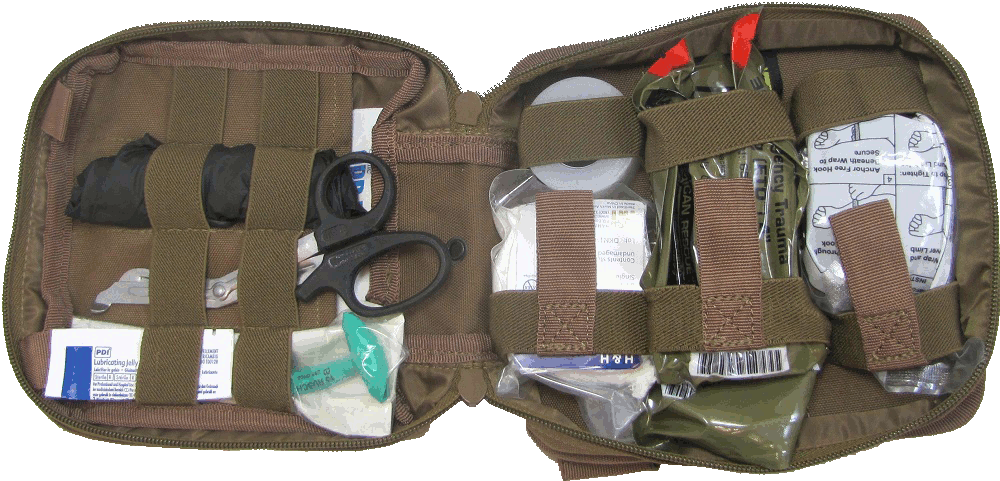Hugh,
I agree that the report, “The Profile of Wounding in Civilian Public Mass Shooting Fatalities,” as posted in the Journal of Trauma and Acute Care Surgery, is a bit arcane, but what would you expect? This is supposed to be the raw research methodology and data, and its actually reassuring to me to see that rather than the unsubstantiated claims often made in firearms conversations.
I’m not a trauma expert by any means, not in anyone’s wildest imaginations, though I have been trained as a Combat Lifesaver (and have taken other med courses over the years), so I have at least a basic understanding of the treatment issues. And I wouldn’t say anything further except that I think there’s something important here that we must not miss.
The point of the article is that the kinds of wounds most commonly seen in civilian mass shootings are somewhat different from what has historically been seen in combat. That’s what their research shows. More specifically, the types of wounds that could be survivable were they immediately treated are different.
They apparently mean to encourage civilians and civilian first responders to be prepared to treat chest wounds, and based on my experience they are right. It’s been my experience that preppers who have made any medical preparations will have one or more tourniquets, but often they have nothing else (but, well, bandaids and gauze)!
What’s strapped onto the buttstock of your rifle? Is it a tourniquet, or a tourniquet and a couple of chest seals? How many preppers carry chest seals (or the materials to improvise a chest seal) with their tourniquets (wherever they keep those)? You don’t think you’re going to get shot in the chest (center of mass)? Your wife or kids aren’t going to get shot there? This study wants to broaden the training given to have a broader focus than bleeding control.
In this study, head wounds were generally fatal, and apparently the initial care that can be given (a) on the scene (b) by a civilian responder (c) for a person who’s been shot in the head isn’t much or wouldn’t make much of a difference. (Certainly there are some things we can do– treat for shock, try to minimize blood loss, treat for hypothermia, protect them from further injury, et cetera.)
And while their results show few victims (none in their study) actually die from bleeding out, the authors are clearly not dismissing the value of tourniquets. In their own words: “Does this mean external hemorrhage control for civilians is unimportant? Emphatically no!” What more do you want? Tourniquets are relatively inexpensive, effective, compact, and easy to use. It would be irresponsible to not have one on you in an environment where you thought gunfire was a possibility (even at the range). [Here’s some useful information about tourniquet usage. Print and save: .]
And who says that gunfire is the only way to have life-threatening bleeding? How many industrial or vehicle or fall scenarios could sever a major artery in an arm or leg? Don’t lose sight of the fact that tourniquets aren’t only for gunshot wounds! Shootings are just the specific focus of this research article.
Chest seals likewise are relatively inexpensive, effective, compact, and easy to use. So why not learn how to use one (front and back)? Why not learn how to improvise one from Saran Wrap and surgical tape, or the wrapper off of your gauze package, et cetera? If you know what the problem is, you can better improvise the solution.
It’s just not that hard, but it is something we should learn about in advance. People need to know to not just cover a bullet wound to the chest/side/back (ribs) with gauze or Quik Clot, which will still allow air into the chest cavity! There is zero reason why every single first aid kit in the U.S. couldn’t have chest seals. They’re just a big, really sticky “bandaid” specifically for holes in your rib cage (to oversimplify). They’re even a little hard to screw up. Even if it’s not perfect, it’s probably better than nothing, until better trained help arrives!
Seal the entrance (and exit) wound ASAP and transport them to a hospital. If help isn’t coming or is delayed, then there are other techniques that can be used as well. I’ve read that in the Civil War soldiers survived through-and-through chest wounds with nothing much more than bedrest (and covering the holes!), so don’t lose hope even in a TEOTWAWKI scenario.
Can you self-care a chest wound? I don’t see why not. The only trick would be trying to seal an open wound on your back. So recruit a bystander or a less-injured victim to do it, or figure some way to close or at least minimize the opening by leaning or laying against something. Self treatment is important, vital even. So have the right tools.
Take a class! Learn how to apply these simple life-saving techniques. You spent a lot of money on a reliable firearm, ammo, and cleaning supplies. Why would you not also drop a few bucks and learn what to do if you or yours are on the receiving end?
Trust God. Be Prepared. We can do both. – ShepherdFarmerGeek










